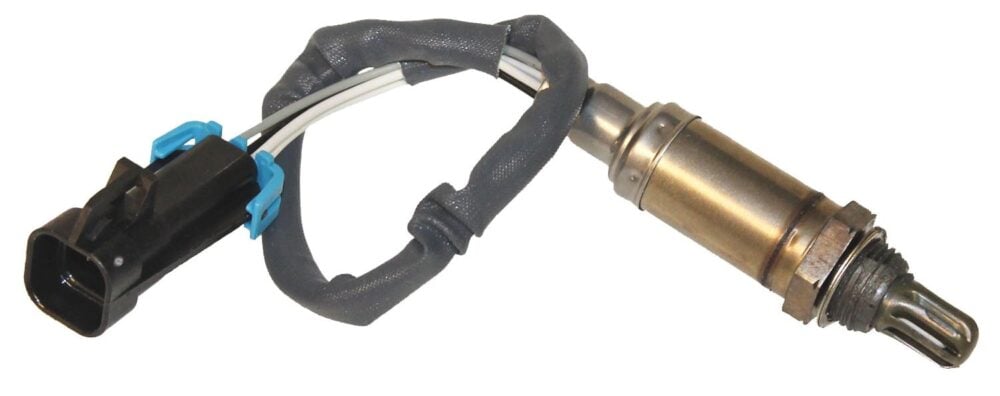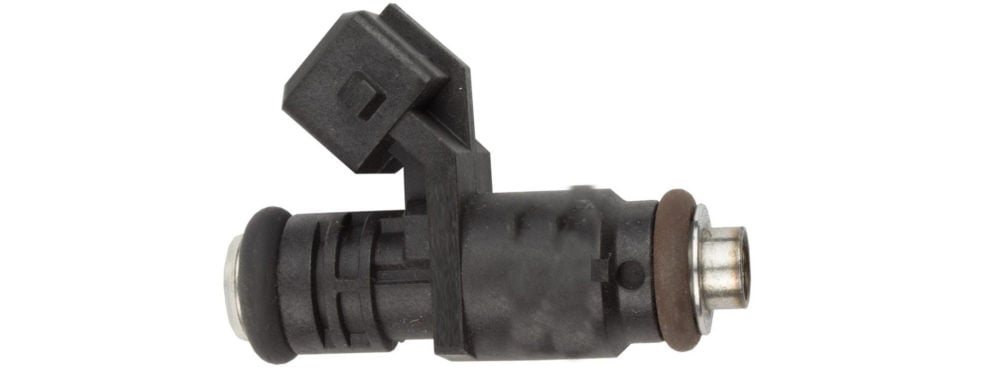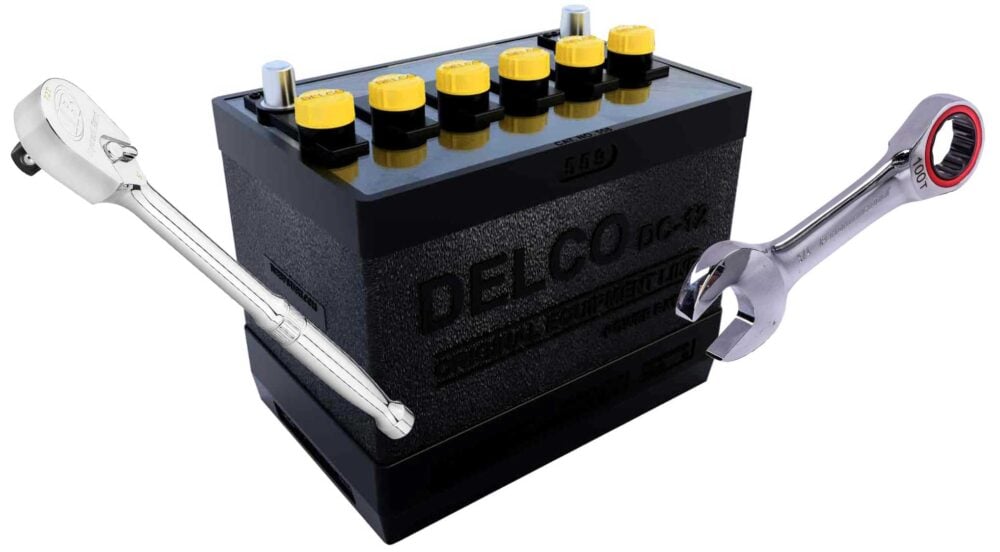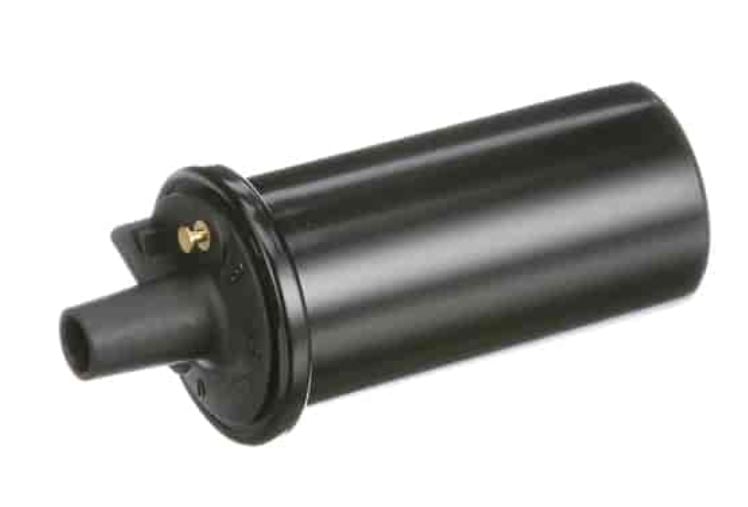

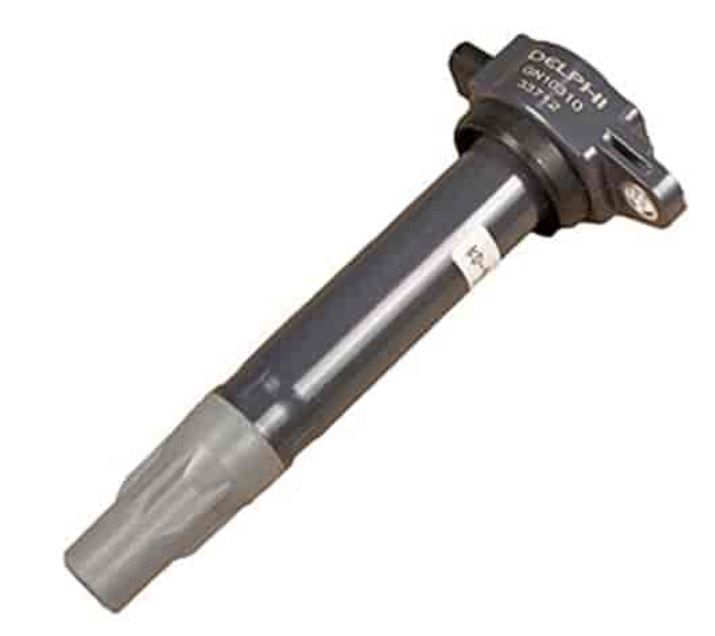
If you haven't yet joined the electric vehicle revolution, then you're most likely driving a car with an internal combustion engine. This type of engine makes power by igniting air and fuel. The resulting explosions create the mechanical force needed to turn the car's wheels.
But battery power alone is not enough to ignite the air-fuel mixture. This is where ignition coils come in, amplifying the low current sent from the battery so it's sufficient for combustion.
If one or more coils fail, your vehicle will not run as it should. You may see a drop in fuel mileage, misfires, reduced power, a rough idle, and more. Ignoring these signs can harm your engine and may even prevent it from starting.
So that you know what to look for, this article will review these bad ignition coil symptoms in more detail. We'll also cover what causes ignition coils to fail and how to test and replace them.
But first, let's dive a little deeper into what ignition coils do for a car.
What Do Ignition Coils Do For Your Car?
While their design has evolved, ignition coils all work in much the same way, transforming low-current battery power (12-volt) into a higher voltage (up to 60,000 volts), so the engine's spark plugs can ignite the air-fuel mixture.
There are three primary types of ignition systems: distributor-based, distributor-less (DIS), and coil-on-plug (COP).
Distributor-Based Systems
Distributor-based systems use a single ignition coil to send current to, you guessed it, the distributor. This rotating component is driven by the engine's camshaft and "distributes" the voltage to the correct spark plug in the right firing order.
This system is most common in older vehicles or race cars, particularly those with carbureted engines.
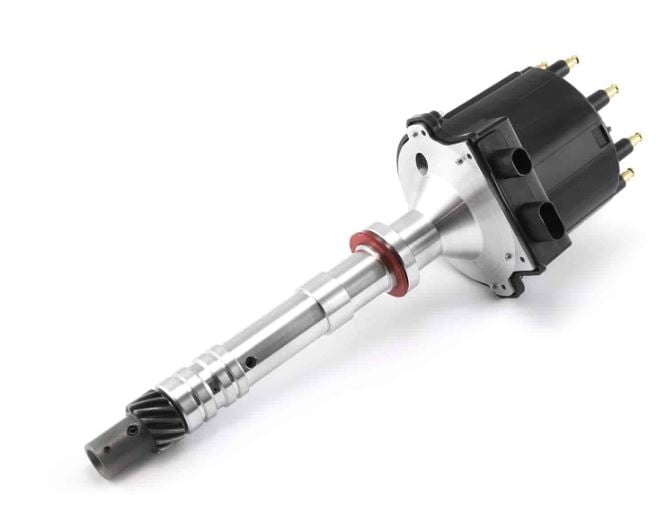

Distributor-Less (DIS) Systems
As their name suggests, distributor-less systems eliminate the need for a distributor. Instead, multiple ignition coils housed together (known as coil packs) provide the spark to each cylinder.
These systems employ electronic engine management systems to control the timing and firing of the coils, resulting in better performance and lower emissions.

Coil-on-Plug (COP) Systems
Coil-on-plug systems are the most common setup in modern vehicles. In this configuration, an ignition coil sits directly atop each spark plug.
COP systems are generally more efficient and reliable than other ignition systems as they eliminate the need for connecting spark plug wires and have fewer parts.
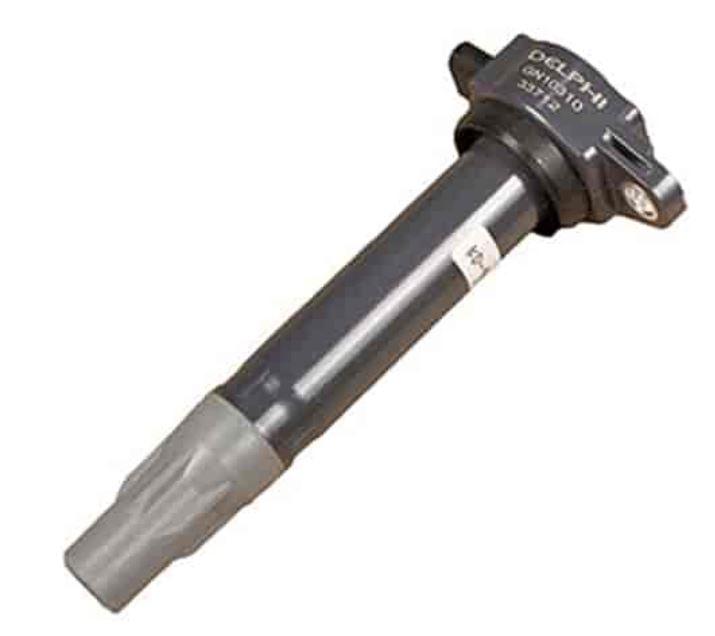
Learn more about each of these systems, including their pros and cons, in our "Beginners Guide to Ignition Systems."
No matter your car's ignition system type, your coils must remain in working order for optimal engine combustion. Otherwise, it won't be long before you notice symptoms like engine misfires, a check engine light, or vibrations while accelerating.
How You Can Clearly Tell That Your Ignition Coil Has Gone Bad
So that you can clearly spot any issues and resolve them early, this section reviews the most common symptoms of a bad coil pack or coil. You may experience some or all of these as they are often interrelated.
We’ll also cover how to test your ignition coils using a multimeter, so you can clearly tell if any have gone bad.
Watch for Common Bad Coil Pack Symptoms
Check Engine Light Appears
Found in the instrument panel or dash, a check engine light (CEL) is designed to alert drivers of potential engine problems. This indicator appears as a yellow or orange icon in the outline of an engine, possibly with the words "Check Engine” or "Service Engine" below.
While a CEL can light up for many reasons, combustion issues—like a bad ignition coil—are some of the most common. If a CEL illuminates on your dash, the easiest way to track down the cause is using an onboard-diagnostic-II (OBD-II) scanner.
JEGS has a wide variety of different OBD-II scanners to help you quickly diagnose any symptoms of a bad coil pack. Browse their selection today and have your order sent straight to your door.

Misfires Cause Poor Power & Efficiency, a Rough Idle, & Vibrations While Accelerating
Misfires are the cause of most symptoms of a bad coil pack, coil, or other ignition system component. A misfire is when the ignition spark is too weak to fully burn the air-fuel mixture, which can significantly affect how an engine performs.
Common bad coil pack symptoms include:
- Poor fuel mileage
- Reduced engine performance
- Rough engine idle
- Check engine light
- Vibrations while accelerating
- Engine backfires
If you notice any or all of these engine problems, you very likely have an ignition system issue, possibly a bad coil or damaged spark plug wires.
The best response to any of these bad ignition coil symptoms is to locate, verify, and address the cause before matters worsen (more on this later).
Engine Has Trouble Starting or Doesn’t Start
Of the many symptoms of a bad coil pack, starting problems are some of the most obvious and most inconvenient. It's important to determine if the issue is fuel or ignition system-related to help narrow down suspect components.
If turning your key in the ignition causes the engine to crank but not start, you may have a coil pack that needs replacing. This is because a failing coil will struggle to generate enough voltage to ignite the air-fuel mixture in the combustion chamber.
The engine will sound like it's having trouble turning over, with prolonged cranking before it finally fires up—or doesn't. In some cases, the engine may start but then stall shortly after. This suggests you have a weak ignition coil that can't maintain sufficient voltage for combustion.
Failed Emissions Test
Another symptom of a bad coil pack is a failed emissions test. If your engine can't generate a strong spark, the air-fuel mixture in the combustion chamber may not burn completely.
This unburnt fuel then exits through the exhaust, leading to higher levels of pollutants like hydrocarbons, carbon monoxide, and others.
Besides further taxing the environment, your car will unlikely pass a state emissions test. This means you won't legally be allowed to drive it until repairs are made, and the vehicle clears.
Test the Ignition Coil Windings With a Multimeter
If you suspect you have a faulty ignition coil, you can test them yourself at home using a multimeter diagnostic tool. These hand-held devices allow you to measure an electrical system's current, voltage, and resistance.
Specifically, you'll use a multimeter to perform a "primary and secondary resistance test." Here’s how:
- For the primary resistance test, connect the multimeter's positive and negative probes to the corresponding terminals on the ignition coil.
- Check if the primary resistance reading falls within the manufacturer's recommended range (typically .4 to 2 ohms).
- For the secondary resistance test, attach one probe to the coil's high-tension output terminal (where the spark plug wire or spark plug connects) and the other to the negative terminal.
- Verify if the secondary resistance reading is within the specified range (6,000 to 12,000 ohms).
- If resistance reads far outside these values, then the coil is likely faulty/failing.
- You can also check primary and secondary resistance on the other ignition coils (if your engine is equipped) and compare readings. If one or more coils is noticeably different in testing results than the rest, it may be faulty.
Keep in mind this test is not always accurate. Some coils may still function just fine while outside optimal resistance readings.
If you haven't added a multimeter to your toolkit, check out JEGS extensive selection of these essential diagnostic devices today.

Understanding Why Ignition Coils Fail
Ignition coils are fairly sturdy, with most lasting 100,000 miles or more before having problems. Yet, nothing lasts forever, and coil packs are no exception.
Several factors contribute to premature coil failure, no matter the type of ignition system, and understanding them can help you identify and address issues early.
The most common causes of coil pack failure are excessive heat, vibration and mechanical stress, and bad electrical connections.
High heat can damage the insulation surrounding the coil windings, reducing longevity. As for vibrations and mechanical stress, these affect all vehicles. However, your ignition coils will wear faster if you frequently push your engine to extremes or often drive on rough roads.
Lastly, damaged or corroded wiring or poor connections can interfere with how your ignition coils perform, expediting their failure.
To ensure your coils last as long as possible, your best bet is to adopt a regular engine maintenance and inspection schedule. Doing so allows you to spot overheating or wiring issues early and may even save your coils before they fail.
While you can't avoid vibrations and mechanical stress entirely, you can keep them in mind and be easier on your vehicle.
What You Need To Do To Replace Your Ignition Coils
Once you’ve verified a faulty ignition coil, you can follow the below steps for a smooth replacement process:
1. Gather Necessary Tools & Parts
First, check that you have the needed tools, including a socket set, extension bars, spark plug socket, and a torque wrench. You'll also need new ignition coils specific to your make and model.
2. Disconnect the Battery
To prevent electrical issues, disconnect the negative battery terminal before working on the ignition system.
3. Locate the Ignition Coils
In a COP system, the coils sit directly on top of the spark plugs. For coil pack systems, the coils are often found near the engine's valve cover. If your system is distributor-based, the coil should be located near the distributor, connected by a spark plug wire.
4. Remove the Faulty Coils
Carefully disconnect the electrical connectors from the ignition coils. For COP systems, remove the retaining bolts and pull the coil out. In a coil pack system, remove the entire pack by loosening the mounting bolts and detaching the spark plug wires. As for distributor-based systems, disconnect the spark plug wire and any other electrical connectors. Finally, remove the mounting bolts to release the coil.
5. Inspect the Spark Plugs
Before installing the new coils, examine the spark plugs for signs of damage or wear. If needed, replace them as well.
6. Install the New Ignition Coils
For COP systems, place the new coil over the spark plug and secure it with the retaining bolt. Reconnect the electrical connector. In a coil pack system, attach the spark plug wires to the new pack, position it correctly, and tighten the mounting bolts. In a distributor-based system, secure the new coil with the mounting bolts, reconnect the spark plug wire, and attach any other electrical connectors.
7. Reconnect the Battery & Test the Engine
Reattach the negative battery terminal and start the engine. If everything is installed as it should be, the engine will run smoothly, and any prior symptoms should be resolved.
If you get stuck on any of the above steps, be sure to consult a repair manual specific to your vehicle or have a professional perform the job for you.
Experiencing Symptoms of a Bad Coil Pack? Trust JEGS for All Your Automotive Needs
Understanding the different bad coil pack symptoms and addressing them promptly can save you time, money, and stress. Regular maintenance and quality replacement parts are key to keeping your engine running smoothly.
When it's time to replace your ignition coils, trust JEGS for the best in high-performance auto parts. Visit JEGS.com for all your automotive needs.

